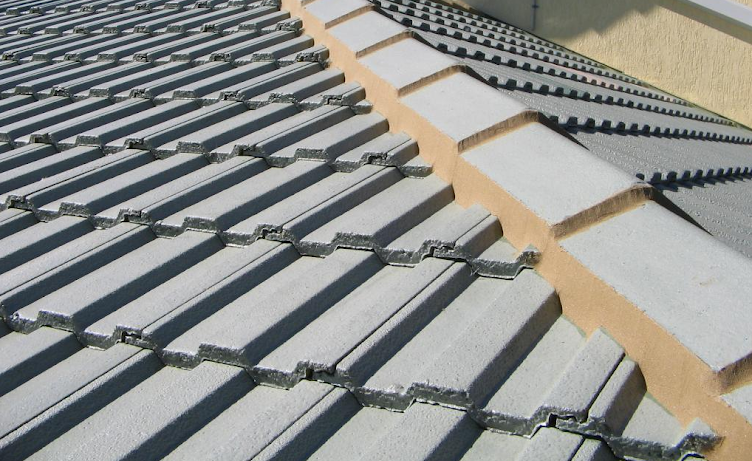“There is a disturbance in the Force. Can you feel it?” Being the Star Wars fanatic that I am, this line has a lot of parallels with it, including what is going on in construction here on Earth. We don’t have floating cars and diplomatic robots fluent in 6 million languages yet, but we do see the construction industry being transformed like never before. While we expect to face a number of growing pains along the way, it is an exciting time to be in the industry.

To share some of this excitement, we at Autodesk would like to spend the next few months sharing our vision of the future for how structural things will be designed and made. We will reflect on how the structural workforce has successfully adapted to trends like BIM and globalization. We will address ongoing challenges facing the structural industry, and discuss where we have been investing to help solve these challenges. We will also talk about trends shaping the future which we believe are important to watch. Not only will they impact how we invest in technology to help our customers, they will impact future generations of structural engineers, detailers, fabricators and trade professionals.
A reflection on the past
Before we look into the future, let’s reflect on the trends that have impacted the structural industry over the past decade and how companies have adopted to them. Looking at fabrication first, the various manufacturing sectors have faced similar trends but have responded to them differently. All the sectors are seeing a continued shortage of domestic skilled labor which has forced manufacturers to outsource engineering, invest in more technology and adopt more prefabrication methods to reduce the need for labor on site. The structural steel industry has responded to labor shortages and competitive pressures with full force by embracing digital technology more than any sector. In fact, the structural steel fabrication industry has spent the last two decades using 3D model-driven technologies to streamline shop fabrication, reduce waste, and improve quality. This has truly made the steel industry more cost effective, BIM-enabled, and scalable to meet client demand, but there is still room to go. David Weaver from Mold-Tek Technologies Crossroads Detailing, discussed trends in automation for steel fabrication in a recent webcast he did for Autodesk that’s worth checking out here.
The precast concrete, cold-formed steel, and timber industries have started to use model-driven workflows where labor costs are high and prefabrication brings benefits to project delivery. The cast-in-place industry continues to lag in its use of model-driven technologies in design, manufacturing and construction. Though rebar manufacturing shops use highly automated and optimized processes, their methods are still mostly 2D based.
Looking at structural engineering, the most important trend since the advent of personal computing is the adoption of Building Information Modeling (BIM). With adoption beginning in the early 2000s, it established a way for project teams to improve collaboration by working within a common, multi-discipline 3D environment. Structural engineering firms initially adopted BIM to meet client requirements but now see the return-on-investment as a result of better coordinated designs that are easier to communicate to their clients. Firms like Buro Happold and Odeh Engineers have been using BIM for years on complex projects like this one for MassArt in downtown Boston, Massachusetts and this stadium in Natal, Brazil. The benefits of BIM have also been recognized by owners, now driving BIM mandates along with government agencies across the world.

After reflecting upon my own experiences practicing structural engineering, these benefits make sense. While working at Ellerbe Becket back in the 1990s, it was a pre-BIM world that required a lot of coordination between the design disciplines and subcontractors. One project in particular that I worked on called Devos Place Convention Center would have benefited from using BIM to better coordinate the design between other disciplines, between the structural design and documentation, and to better visualize the complex steel connections in 3-D
The benefits of BIM are real and engineering and fabrication firms are seeing its benefits. However, we must not forget that BIM is not the only trend impacting the industry. There are other challenges beyond new technology that are disrupting the structural industry we know and driving change.
Facing Today’s Challenges
Despite the proven benefits of BIM in engineering and the use of model-driven processes in fabrication, the various structural sectors still feel the pressure from increasing project complexity, globally dispersed teams and accelerated project schedules, and a lack of skilled labor entering the workforce. To overcome these challenges, project teams are finding new ways to collaborate so they can generate new value streams in their project work to remain competitive. For example, if engineers, fabricators and builders can contractually work together with shared risk and reward, the benefits are significantly greater. Because of this, we are seeing firms change how they deliver projects in a number of ways:
- Engineering firms and construction firms are merging to provide combined, integrated design to construction services
- Firms are using more innovative contractual models to deliver projects like Design-Assist, Design-Build or Integrated Project Delivery
- Firms are forming partnerships to offer integrated services. This could be engineers partnering with steel detailing or fabrication companies or fabricators extending their design-assist services further upstream
You can read more about how California-based structural engineering firm Rutherford + Chekene Structural Engineers is delivering new types of services to differentiate their business.
So haven’t these delivery models already been used in the past? Yes, they have. What is different now and in the future is a transformation in how construction projects are designed and built that will magnify the benefits of using these new delivery models. We will cover this next.
Trends: Where are we Heading?
We are now at the cusp of a new era of connected design, manufacturing, construction and building operation that is being driven by the digitization of information and connectivity between people, places and things, also referred to as the Internet of Things. I would like to point out a few of the trends that will stem from this era of connectivity and will impact how structures are designed and built over the next decade.
- New structural materials and systems will emerge that are smart, connected, adaptive and sustainable. Examples of this are self-healing concrete, 3D printed nano-structures and structural systems that dynamically adapt to changes in their environment. One such technology developed by Sensequake uses smart sensors in buildings to study a structure’s resonance behavior so engineers and building owners can better predict structural performance during an earthquake.
- Self-learning computational methods will automate simple engineering tasks while assisting engineers in performing more complex engineering tasks. This will empower engineers to offer more high-value services.
- Global work sharing will become commonplace as the world scales its cloud infrastructure, making engineering and detailing services highly competitive.
- Engineering education will focus on high-value, problem-solving skill sets. Craft and labor training will require new technology skill sets that are more manufacturing centric. You can read more here about how the National Institute of Steel Detailing now includes BIM curriculum in their future apprenticeship programs.
- Manufacturing processes will be hyper-connected with the buildings that enclose them to optimize and minimize energy consumption and carbon footprint.
- Manufacturing-driven innovations like machine learning, lean manufacturing, and modular construction will transform the construction site in response to a growing shortage in skilled domestic labor. A great example of this is the steel industry’s adoption of novel steel modular frame systems developed by ConXtech. You can read more about their technology here.
- The sharing economy will disrupt how construction projects are funded, designed, built and operated. This will be enabled through the connectivity of teams, manufacturing and jobsite processes and building operations.

The common theme that will emerge is a hyper-connectedness between people and things that will allow the production of ideas and things to be done in a much more effective and sustainable way. So how serious should you take these trends? Are others in the industry already preparing for these changes?
Well, let’s look the British Government. They now require all government projects to use BIM starting in 2016 (www.gov.uk/bis). This mandate is a part of their Britain’s ‘Construction 2025’ joint strategy which sets out how industry and government will work together to put Britain at the forefront of global construction over the coming years. Britain believes that using Digital Design with Smart Construction methods will give them a competitive advantage over other world economies. In other words, if they can reduce the costs to build and operate their infrastructure, they will be more competitive than other economies that don’t. Their success will put pressure on other economies to follow suit with digitally connected infrastructure so that they compete in a global economy.
What can you expect next?
So what do all these trends mean to you as a structural engineer or a fabricator? How can you start preparing for these trends now vs later? We will answer these questions over the next several months as we talk about trends and technology adoption that are specific to certain industries. We look forward to sharing future posts about the ever-fascinating future of structures.
So what do you think the future of making structural things will look like? We would like to hear what your vision of our industry will be.
The post The Future of Making Structural Things appeared first on BIM and Beam.
from my Autodesk source Bim & Beam: BIM and Beam at http://blogs.autodesk.com/bim-and-beam/2016/08/26/future-making-structural-things/
via IFTTT

 The Advance Steel 2017 Extension for Revit allows you to manage changes between Revit and Advance Steel including Steel Connections for Revit. The 2017 extension comes with a set of various enhancements which offer a higher level of model information exchange, especially with synchronization for Revit models containing steel connections back and forth with Advance Steel. The “Advance Steel 2017 Extension” for Revit is only compliant with Revit 2017.
The Advance Steel 2017 Extension for Revit allows you to manage changes between Revit and Advance Steel including Steel Connections for Revit. The 2017 extension comes with a set of various enhancements which offer a higher level of model information exchange, especially with synchronization for Revit models containing steel connections back and forth with Advance Steel. The “Advance Steel 2017 Extension” for Revit is only compliant with Revit 2017. The Steel Connections for Revit extension provides access to a variety of parametric steel connections in Autodesk Revit software, enabling connections to be modeled with a higher level of detail. The application also includes a built-in steel connection design engine based on US and European codes. This functionality helps to bridge the gap between design and fabrication as both members and connections can be better synchronized between Revit and Advance Steel for detailing.
The Steel Connections for Revit extension provides access to a variety of parametric steel connections in Autodesk Revit software, enabling connections to be modeled with a higher level of detail. The application also includes a built-in steel connection design engine based on US and European codes. This functionality helps to bridge the gap between design and fabrication as both members and connections can be better synchronized between Revit and Advance Steel for detailing.

















